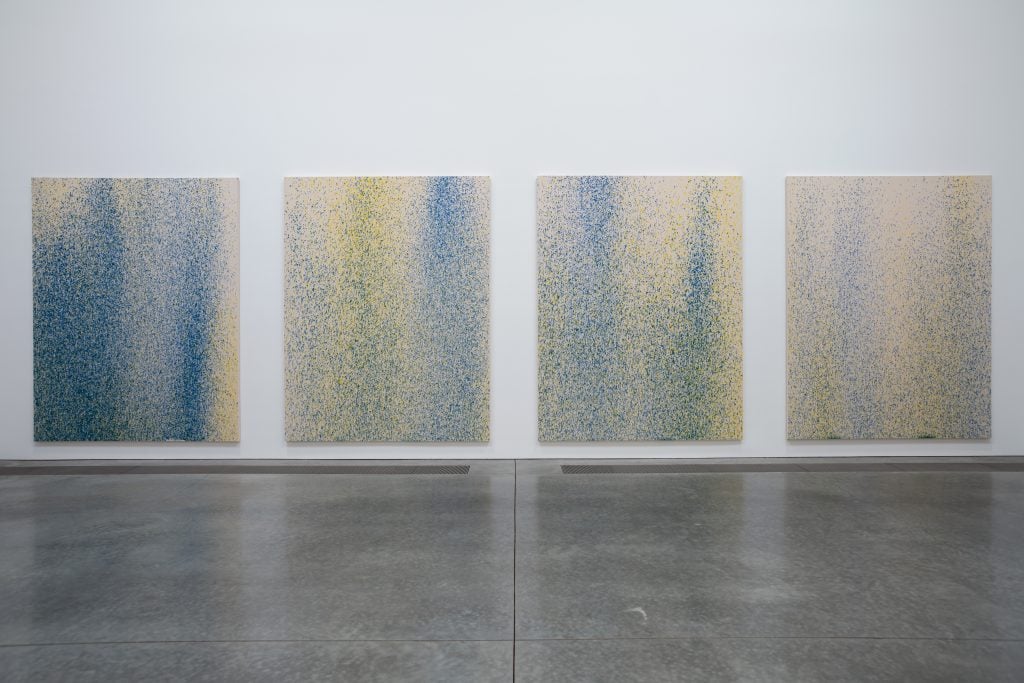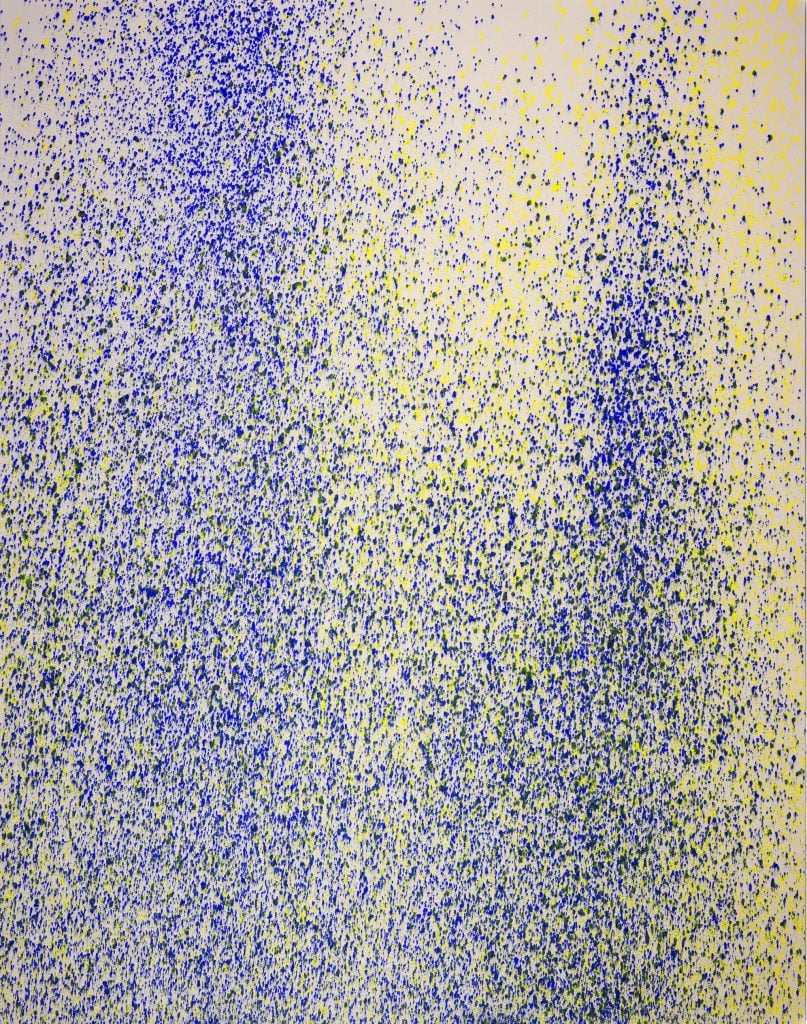How Artist Lucien Smith, Fed Up With Speculators and Dealers, Quit His Galleries and Got His First Solo Museum Show
In 2013, just two years out of art school, the artist Lucien
Smith had already become a cautionary tale. That year, his
painting Hobbes, The Rain Man, and My Friend
Barney / Under the Sycamore Tree set a stratospheric auction
record at Phillips New York, when it sold for $389,000. Smith saw
two more years of rampant speculation before his auction prices
fell, just as quickly as they rose.
In 2019, the average sale price for Smith’s work at auction was
just $22,992, according to the Artnet Price Database.
After a string of bad experiences with primary-market dealers,
too, Smith decided to strike it out on his own in 2015. Now, he is
having his first solo museum exhibition, which he sees as proof
that artists can successfully represent themselves.
“I’ve worked with some of the best galleries and I’ve worked
with younger galleries and they were never able to secure a museum
show for me,” Smith tells Artnet News. “So I just took it into my
own hands.”
The Parrish Museum in Long Island is showing the final 10 works
from Smith’s series of “Rain Paintings,” which he made in the
summer of 2013, when he was offered the use of a house in the
Hamptons. Installed in the museum’s 1,000-square-foot special
exhibitions gallery, the tightly hung works create a dazzling
immersive environment that resembles the inimitable combination of
soft East End light and ocean spray, which have been sources of
inspiration for generations of painters in the Hamptons.

Lucien Smith, Installation view of
“Southampton Suite” (2013) at the Parrish Art Museum, Water Mill,
New York. Photo: Gary Mamay.
The “Southampton Suite,” as the works have been collectively
called, mark the crescendo of the artist’s larger body of “Rain
Paintings,” for which he used a technique of showering paint onto
unprimed canvases with an industrial fire extinguisher.
Smith says the genesis of the exhibition has been “the best
experience I’ve had as an artist so far.”
A year and a half ago, Smith pulled the suite of paintings out
of storage and installed them in a warehouse in Queens to show a
select group of industry contacts. Among the guests was Parrish
chief curator Alicia Longwell, who he had met in 2012 through a
collector who had gifted one of the artist’s paintings to the
museum.
“When I walked into the room where the paintings were on view it
was so close in proportion to this gallery of ours, I thought, this
would be really extraordinary to show,” Longwell told Artnet News.
The Parrish “is very interested in artists who have been here on
the East End,” she added, “and the paintings were made a stone’s
throw from the museum.”
Though museum exhibitions typically take several years to plan
and execute, the opportunity to show Smith’s paintings came much
sooner than expected. The Parrish had actually scheduled a major
loan exhibition for August, but was forced to scrap the plans when
the lockdown took effect. “So I thought maybe Lucien would like to
bring the paintings here for this moment, and it just worked,”
Longwell said. “It was perfect timing all around.” She added that
restrictions limiting Americans’ travel abroad has meant that
“everybody in christendom is out here on the East End.”

Lucien Smith, LSMI 5 – Blue and
Yellow (2013).
Now Smith hopes that the exhibition will not only revitalize his
own career, but serve as an inspiration to other artists who may
want to represent themselves. “What I would love to achieve from
this is to give artists a little more power,” he says. “A lot of
artists think they need to put their careers in the hands of
curators and dealers and gallerists to be taken seriously. But I
don’t necessarily think that is the case all of the time.”
Andrea Glimcher, an art advisor who specializes in counseling
artists, including Pat Steir and Will Ryman, told Artnet News that
while self-representation can work, it still only comes by having
connections to the same networks of collectors, curators, and other
contacts that galleries often provide.
“There absolutely are people who’ve done it and have the
capacity to do it, but I believe that it’s very rare and very
hard,” Glimcher said. “Even if artists make make their own
decisions, nobody can get there on their own.”
“Even the most independent of artists still have a support
network,” she added. “Whether that network is more invisible or
more obvious, it’s still there.”
Smith acknowledges that going solo has has been “a tough road,”
but feels like it ultimately has paid off: “For me this was like my
own little hurrah.”
The post How Artist Lucien Smith, Fed Up With Speculators
and Dealers, Quit His Galleries and Got His First Solo Museum
Show appeared first on artnet News.
Read more https://news.artnet.com/market/lucien-smith-parrish-museum-1902292


